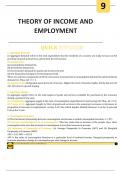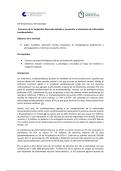Class notes
Economics – ISC Handbook of Economics – Theory of Income and Employment - Quick Revision
- Course
- Institution
Economics – ISC Handbook of Economics – Theory of Income and Employment - Quick Revision – Notes : Aggregate Demand, Aggregate Supply, Consumption Function, Saving Function, Determination of Equilibrium of Income and Employment, Multiplier, Excess and Deficit Demand, Situation of Demand, Defi...
[Show more]




